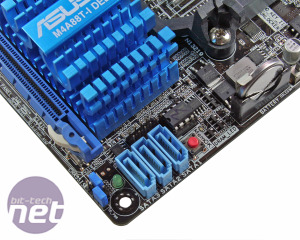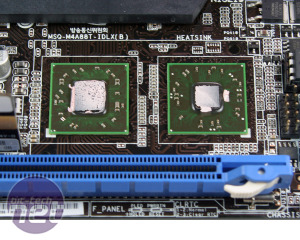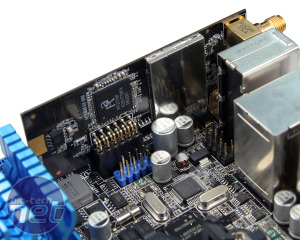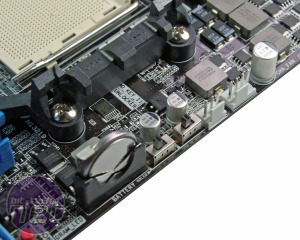Asus M4A88T-I Deluxe Board Layout
Mini-ITX boards tend to run by a loose rule book when it comes to design - there's little set in stone. This works to the format's advantage, because mini-ITX cases vary greatly, and it also allows unique mods. On the other hand, it can lead to compatibility issues, so check your board and case as carefully as possible before buying.Asus has put all the connectors sensibly around the edges: power, fan headers and SATA are easy to get to. Only the USB and front audio pin-outs require a cable that has to meander between the 802.11n WiFi daughterboard and chipset heatsink.
The addition of WiFi is a nice extra squeezed in at the end, however even though the two antennae can be put anywhere, Asus' bundled antennae are just plain ghastly. Please, just give us the standard pointy black ones!
The three SATA ports are enough for most small builds, but they can be combined with the eSATA port on the back for extra JBOD space or RAID, if you must. Asus wisely bundles in the older SB710 chipset, not the more expensive and fully featured SB850. This might miss out on SATA 6Gbps goodness, but the board's destined market doesn't need it; better yet there's native core unlocking from the older Southbridge, rather than requiring the space for an extra chip.
The PCI-Express 2.0 slot delivers the full 16 lanes of bandwidth, so it's suitable for any modern graphics card. This potentially makes this board a solid foundation for mean little gaming rig if you didn't want to go down the Intel route. Unfortunately, if you fumble an overclocking attempt, the clear CMOS jumper is difficult to get to if you use a bulky graphics card as it sits underneath it.


The three SATA ports with MemOK! button above, and the 880G/SB710 chipset and Southbridge exposed. Click to enlarge
On the plus side though, Asus crams both 880G chipset and SB710 Southbridge under one single heatsink. This saves space, but as you might have expected, it gets seriously toasty. So much so that Asus has built overheat protection into the BIOS: if the chipset goes over 95˚C the board will shut down. Our recommendation is to use a case with good airflow.

MSI MPG Velox 100R Chassis Review
October 14 2021 | 15:04











Want to comment? Please log in.